Digital Dentistry & AI Integration
Explore how artificial intelligence and digital technologies are transforming diagnostic accuracy, treatment planning, and patient experience. Learn from case studies using CAD/CAM systems, 3D printing, and smart dental imaging.
Global Oral Health Challenges & Public Health Strategies
Address disparities in oral health access across regions. This session highlights community-based interventions, public health policies, and cross-border collaborations aimed at improving global oral care outcomes.
Advances in Implantology & Prosthodontics
Discover the latest in dental implants, bone grafting techniques, and biomaterials. Experts will share practical insights into precision implant placement and full-mouth rehabilitation.
Regenerative Dentistry & Stem Cell Applications
Explore the future of tissue engineering and stem cell therapy in dental care. Learn how regenerative solutions are paving the way for non-invasive, biologically driven treatment methods.
Teledentistry & Virtual Dental Care
This track focuses on how telehealth is revolutionizing patient engagement, follow-ups, and rural outreach. Includes real-world applications, legal considerations, and future opportunities in virtual care.
Pediatric & Geriatric Oral Healthcare Innovations
Dive into specialized care strategies for vulnerable populations. Sessions will cover preventive protocols, age-specific challenges, and the use of technology in managing pediatric and elderly patients.
Cutting-Edge Research in Oral Microbiome and Disease Prevention
Explore the latest studies on the oral microbiome’s role in dental caries, periodontal disease, and systemic health. Learn about innovative preventive strategies and personalized treatment approaches emerging from microbiome research
Nanotechnology and Biomaterials in Dentistry

